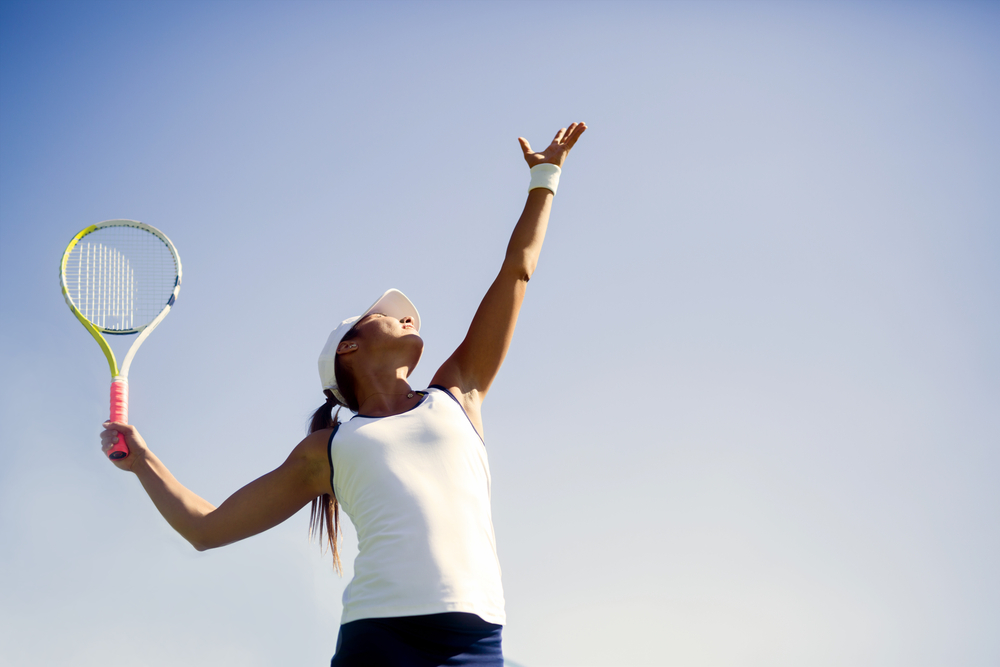Anyone who plays a racquet sport knows the importance of having healthy shoulders. Any type of muscle soreness or injury can make serving and hitting ground strokes very painful, taking the joy out of playing. There are four muscles that make up the rotator cuff, the infraspinatus, subscapularis, supraspinatus and teres minor, each of which have a different function, yet they work in conjunction to allow the arm to move in a 360-degree plane. Due to poor posture, an increase in sitting, and a lack of general emphasis on mobility, these muscles are unable to effectively move and stabilize the shoulder.
Being a tennis, paddle, or squash player with lots of power does not necessarily come from strength. In fact, it has a lot to do with flexibility and how well you use all parts of your body in unison, something we refer to as the kinetic chain.
Novak Djokovic is the best example of power through flexibility. When you look at him, he is slender and isn’t somebody you would classify as “strong” in the traditional sense. However, one of the things that makes him such a force on the tennis court is his flexibility. His body’s elasticity allows him to create so much racquet-head speed that it doesn’t benefit him to be bulky. He transfers a lot of his power by using his legs, hips, core and shoulder together. He utilizes every part of his body to create his power, and if one part of that kinetic chain is off due to either injury or lack of range of motion, a lot of his skill, coordination and strength would be lost.
When we think about serving in racquet sports, a lot of the generated power comes from the range of motion in our shoulder, rather than just strength. One way to demonstrate this point is a simple exercise to try while reading this.
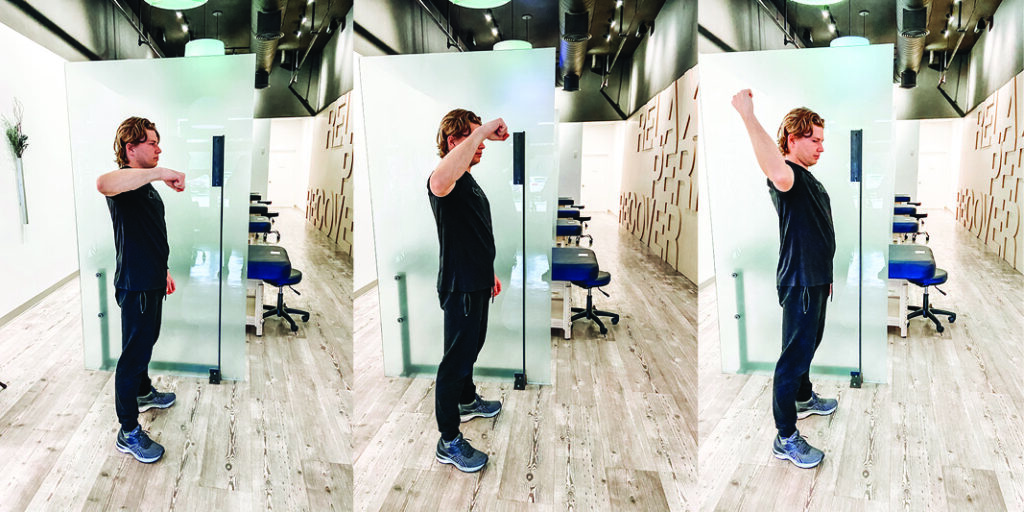
Take your arm and bring it up to a 90-degree angle like in the starting position picture above, while keeping your elbow in the same position, bring it up to the 45-degree angle in the second photo and snap it back to the starting position with maximal force. Now try doing the same thing but this time, bring your arm back as far as possible to your maximum external rotation and snap back to the starting position from here. Which of these two created the most force? Maximum rotation of course. This is one of the keys to serving with power. Now if you look at my maximum rotation (which is not great by the way at only 95 degrees or so), if I could get my arm back another 20-30 degrees, wouldn’t I be able to create more force? Absolutely.
Our shoulder creates torque when we serve and the more range of motion we have, the greater our angular momentum. Now I’m not trying to turn this into a physics lecture, however the key principle behind serving power is in the simple demonstration above. When in the LYMBR studio, we put a large emphasis with all of our racquet sport players on the importance of rotator cuff flexibility. The combination of stretching and our strengthening protocol will help you get your serve as strong as ever.
Below are a series of rotator cuff stretches that you can do at home, as a warm up or cool down. Since these rotator cuff muscles all work together to allow the shoulder to move in a 360-degree plane. It is important to find a routine that helps you, it will not be the same for everyone. Try one set of each stretch, take a rest and go through the series again, be aware of your body and how each stretch changes how you feel. Always stay engaged mentally while you are stretching. This creates more mind to muscle connection, will ensure you are moving safely, and will give you the greatest chance of doing the exercise correctly. All of these factors will help take your racquet game to the next game.
SUBSCAPULARIS
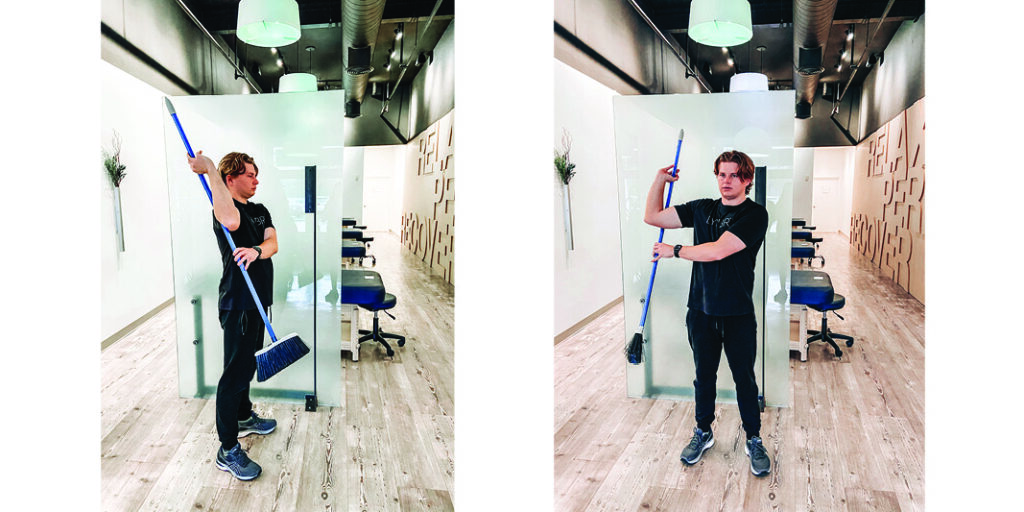
Subscapularis – This muscle is largely responsible for the internal rotation of the shoulder, therefore to stretch the muscle, we must do the opposite. In order to stretch the muscle on your own, grab a long object (a broomstick, wooden dowel, or rake handle works). Standing straight, bring your arm out to the side and bend it to 90 degrees with the object on the back side of your arm. From here, you want to bring your arm forward 5 degrees, drop the arm down by 5 degrees, and extend the arm out by 5 degrees. These tiny movements will isolate the subscapularis muscle and put the shoulder into a healthier position for stretching. Turn your palm so it’s facing forward, and grab the object behind you. With your opposite hand, pull the object forward to externally rotate the shoulder. Move through the stretch for about 3-5 repetitions and make sure not to hold the stretch. Do anywhere from 1-3 sets on each arm depending on how much time you have.
INFRASPINATUS
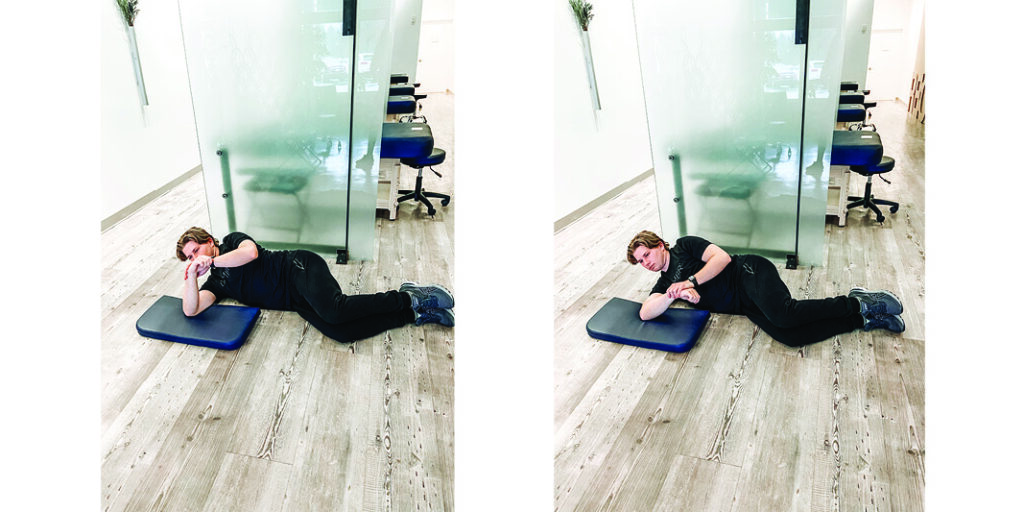
Infraspinatus – This muscle will externally rotate the shoulder, therefore to lengthen the muscle we have to put the shoulder into internal rotation. Stretching this muscle does not require an object as we can use the ground as an anchor. Lying on your side, bring the arm that is closest to the ground out to 90 degrees. We want to position our shoulder similarly to how we did in the last stretch. Bring the arm forward by 5 degrees and extend the arm out 5 degrees. You also want to make sure that your shoulder is in line with your head, if it comes out to the side or is to far behind you then you’ll lose the precision of the stretch. Gently rotate your arm down to the ground whilst keeping your elbow still. Use your top hand to gently assist the arm further. Don’t use a lot of pressure on your wrist as you can hurt the joint or irritate the shoulder. Move through the stretch for 2-3 seconds without holding the stretch. Do 3-5 reps on one side and repeat on the other side. Perform 1-3 sets on each side or as many as you can with the time you have.
TERES MINOR
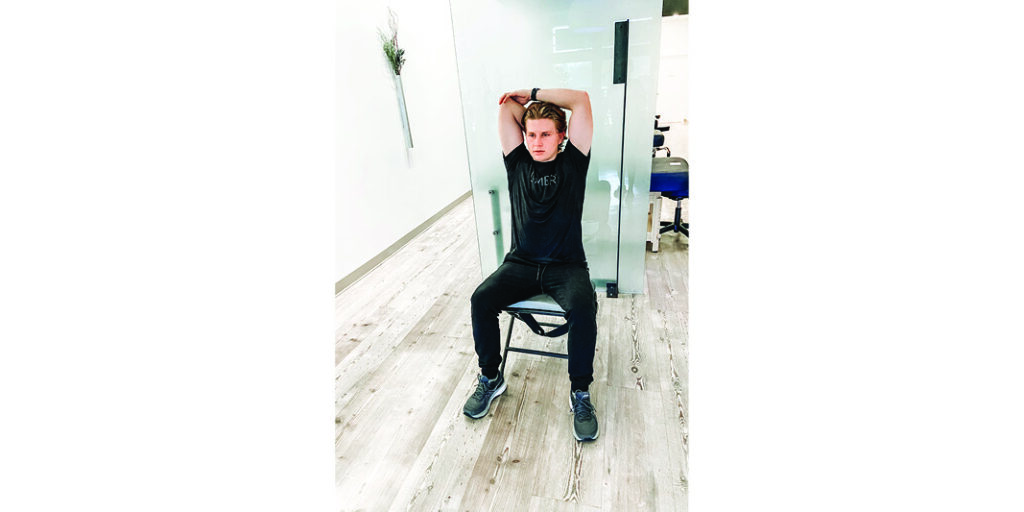
Teres minor – Whilst standing or sitting upright, put your hand behind your head, and reach for your opposite side shoulder blade. Take your opposite hand and grab the outside of your elbow, gently pulling your elbow and hand behind the head. This is an advanced stretch and in order to get the isolation, keeping your shoulder blade in the same place throughout the movement is the key. For most people, this will just feel like a triceps stretch, and that is okay. Put an emphasis on not leaning to one side as that will definitely cause you to lose the isolation of the stretch. Perform 3-5 reps with 2-3 seconds per rep without holding the stretch, repeat on the other side and perform 1-3 sets on each arm.
This is a general routine that works for most people in keeping their shoulders healthy for racquet sports. However, the shoulder joint consists of about 8 muscles that attach to the shoulder blade, upper arm, and collar bone not to mention the various other muscles responsible for stabilizing and mobilizing the shoulder. If you are experiencing shoulder discomfort, or have trouble performing these exercises, we suggest getting in front of a LYMBR practitioner to ensure you are performing them correctly, furthermore to ensure the pain is not being caused by another muscle along the chain.
Written by Koby Jansen of LYMBR Darien. Koby is a former D1 college tennis player at The University of Texas Rio Grande Valley. Former #1 in the state of Queensland and #7 in Australia for his age group.


